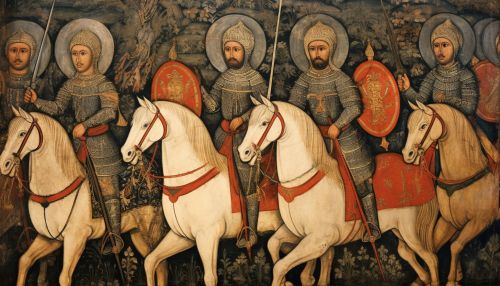Mamluk Sultanate
Origins and Establishment
The Mamluk Sultanate, a political entity that dominated Egypt and the Levant from the mid-13th to the early 16th centuries, was established by the Mamluks, a warrior class of enslaved individuals, predominantly of Turkic and Circassian origins. The Mamluks, originally brought to the region as military slaves by the Abbasid and Fatimid dynasties, rose to power following the decline of the Ayyubid Sultanate.


Mamluk Rule
The Mamluk Sultanate was characterized by a unique political structure, wherein the Sultan was often a former slave who had risen through the ranks of the Mamluk military hierarchy. This system of rule, known as Mamlukocracy, was marked by frequent power struggles and violent succession disputes, yet it also brought about a period of relative stability and prosperity in the region.
Military Achievements
The Mamluks are perhaps best known for their military prowess, particularly their successful campaigns against the Mongols and the Crusaders. Their victory at the Battle of Ain Jalut in 1260 marked a significant turning point in the Mongol invasions, halting their westward expansion and effectively saving the Islamic world from Mongol domination.
Cultural and Architectural Contributions
The Mamluk Sultanate was also a period of significant cultural and architectural development. The Mamluks were prolific builders, leaving behind a rich architectural legacy that includes numerous mosques, madrasas, mausoleums, and fortifications. Mamluk architecture, characterized by its intricate stone masonry, colorful tile work, and monumental scale, is considered a high point of Islamic art and architecture.
Decline and Fall
The Mamluk Sultanate began to decline in the late 15th century, largely due to internal strife, economic difficulties, and the rise of the Ottoman Empire. The Mamluks were ultimately defeated by the Ottomans at the Battle of Ridaniya in 1517, marking the end of the Mamluk Sultanate and the beginning of Ottoman rule in Egypt.
Legacy
Despite their ultimate downfall, the Mamluks left a lasting impact on the region. Their military victories helped shape the political landscape of the Middle East, while their cultural and architectural contributions continue to influence contemporary Islamic art and architecture. The Mamluk Sultanate remains a significant period in the history of Egypt and the wider Islamic world.
